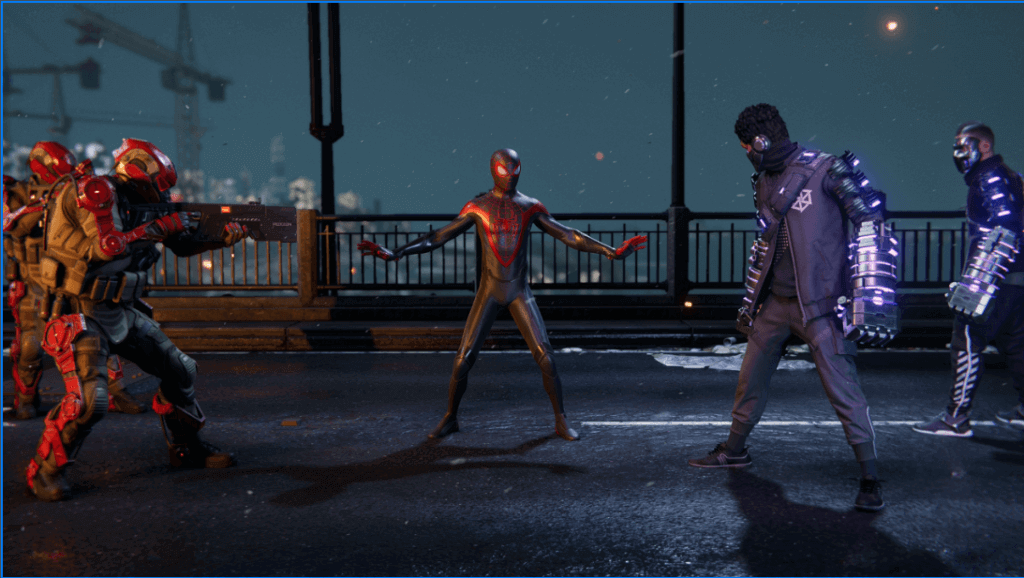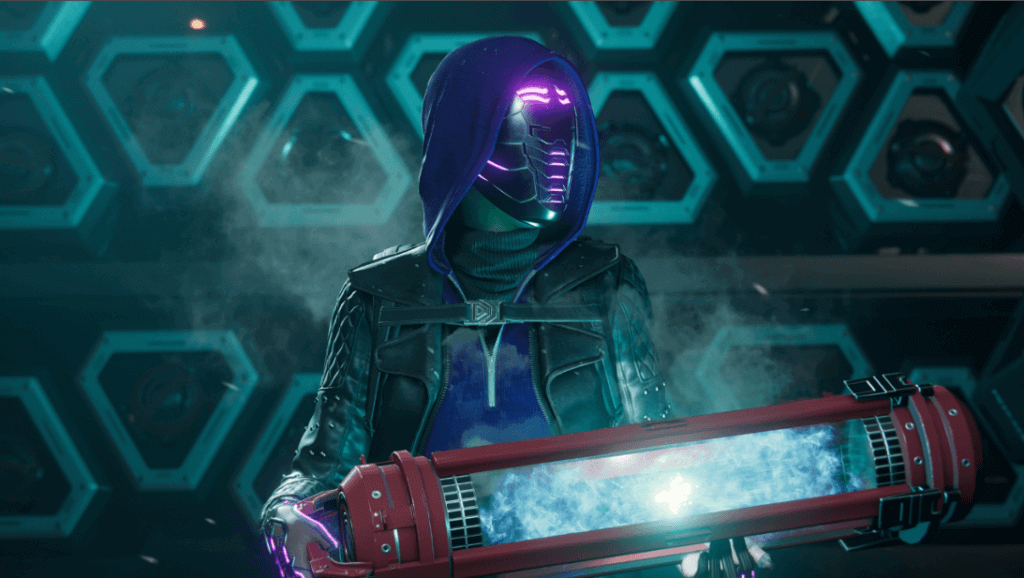I’m not much of a comic book reader, so most of my knowledge about the character of Miles Morales only came from the instant cinematic classic, Spider-Man: Into the Spider-verse. Miles is an intelligent teenager who wanted nothing more than to live up to the lofty expectations he sets for himself. Those expectations only further broadened when he was bitten by a bio-engineered super spider, imbuing him with the abilities of your friendly neighborhood Spider-Man.

Spider-Man: Miles Morales takes place a year after the events of Marvel’s Spider-Man. We join Miles deep into his mentorship with the original Spider-Man, Perter Parker, as the two escort a convoy of prisoners being shipped off to the high tech prison for the most dangerous of criminals, the Raft. Unsurprisingly, things go wrong and the prisoners escape, leaving Miles and Peter to clean up the mess. With that crisis averted, Peter reveals that he’s going to take some time off to work as a photographer for his partner, Mary Jane Watson, as she travels to Symkaria to follow a story for the Daily Bugle. Although, Peter is still cautious about leaving Miles on his own, he believes the new Spider-Man can handle the weight of the responsibility. It’s during this time on his own that Miles learns that not only can he handle the responsibility, but he has the potential to be something greater.
Mainlining the story missions takes around 3 hours to complete, with the additional side quests and activities padding out the game to around 10 hours. That time is spent swinging around New York City, finding collectibles, shutting down enemy bases, and helping the citizens of New York by stopping crime whenever you can. Similar to Marvel’s Spider-Man Side activities are focused on Miles’ relationships with his family, friends, community, and what he can do for the people that nobody really seems to care about. There are various forces working against Miles’ new home of Harlem. The Underground, a criminal organization lead by the enigmatic “Tinkerer”, utilizes “programmable metal” to create various weapons to steal from and eradicate the mega corporation Roxxon Energy at all costs. The Head of Research and Development at Roxxon Energy with a penchant for kidnapping, Simon Krieger, recently started focusing his efforts to “rebuild Harlem”. If that wasn’t bad enough, a mysterious third party is paying groups of henchmen to terrorize and destabilize Harlem by shutting off essential utilities and strong-arming small business owners and forcing them to close up shop.

The gameplay of Spider-Man: Miles Morales is exactly the same as Marvel’s Spider-Man with a few added quirks. Instead of relying on gadgets as Peter Parker does, Miles has access to his “Venom Powers”, bio-electricity based abilities that give Miles a noticeable edge in combat and traversal. Through the course of the game, Miles learns to use his Venom powers in new and creative ways, forging his path to being a different kind of Spider-Man. As you progress through the game it’s easy to feel like you’re Miles, slowly but steadily getting better and more comfortable with his abilities. Miles is not perfect, he’s not as graceful as Peter, and he’s definitely not as experienced, but what he does have is the will of a hero.
One very important aspect of Spider-Man: Miles Morales is the fact that the central and supporting cast are majority people of color. Miles is Puerto Rican and Black, his mom is Puerto Rican, his best friend, Ganke, is Korean American, and the denizens of Harlem are prominently a mix of races. The diversity even extends to the various enemies you encounter throughout the game. Outside of a boss battle or two during the City that Never Sleeps DLC (Downloadable Content) in Marvel’s Spider-Man, both male and female enemies are a regular occurrence in Spider-Man: Miles Morales. For an industry that’s been around for almost 80 years, it’s still surprising to see a cast this diverse.
Spider-Man: Miles Morales is a focused, and relatively brief experience compared to its much larger predecessor. But what it lacks in length, it makes up for with heart. The overall vibe of Miles Morales is distinct from Marvel’s Spider-Man. Where Peter zigs, Miles zags. When swinging through New York, an inspiring orchestral theme plays for Peter Parker. When Miles swings, an equally hopeful and inspiring track with a hip hop beat plays. The two men are different but similar. When they are knocked down, the Spider-Men always get back up to save the day.
Spider-Man: Miles Morales is available now for PS4 and PS5.
*Note: This review is based off of the PS5 version of the game.



